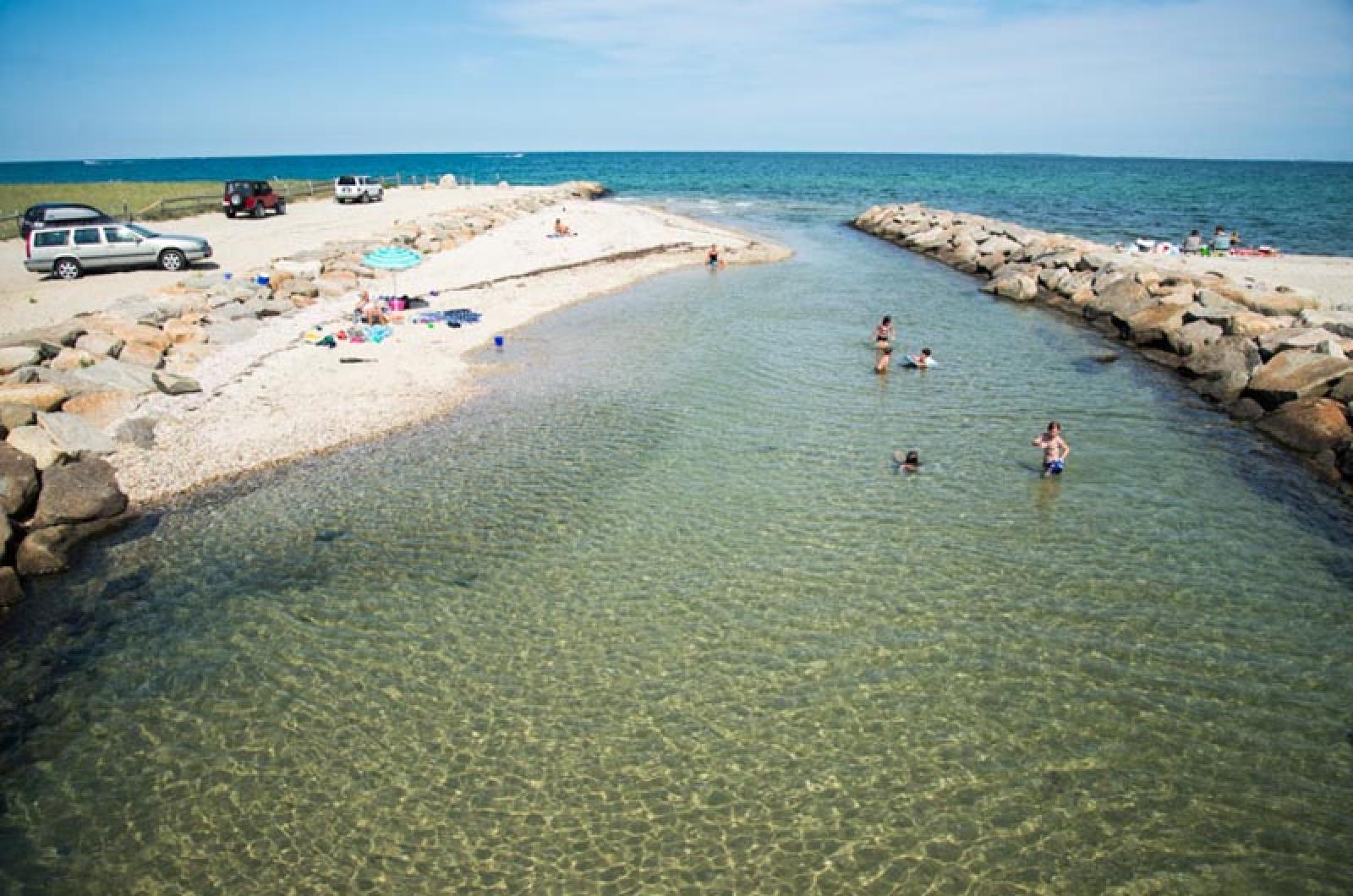Down under a bridge in Oak Bluffs, where a strong current once flowed exchanging water between the ocean and Sengekontacket Pond, people have been setting up beach chairs.
The channel below the so-called Little Bridge at State Beach has diminished dramatically and a beach has formed that threatens to impede the flow of water altogether.
The town of Oak Bluffs is continuing to press for federal disaster aid to dredge the channel and for four other projects, more than 21 months after Hurricane Sandy damaged parts of town exposed to the sea.
The Federal Emergency Management Agency is studying the five projects, but their review process has taken longer than expected. The project to dredge under the Little Bridge went out to bid in May, securing bids between $325,000 and $390,000. But FEMA was unable to commit the funds.
Shellfish constable David Grunden said a further delay in dredging could lead to the deterioration of the water quality, including increases in the nitrogen and bacterial content of the pond.
“If we don’t dig it out and maintain it, it will close up,” Mr. Grunden said.
The dredging project at Little Bridge is one of two time-sensitive projects in town, said Robert L. Whritenour, Oak Bluffs town administrator. A major project to rehabilitate a seawall to protect the North Bluff, which has eroded in past storm events and is vulnerable to future degradation, is due to go to bid this fall. The North Bluff begins at the Oak Bluffs harbor, continues around the Island Queen parking lot and terminates at the Steamship Authority Wharf.
The federal agency assigned the town a new project engineer in May, and have been requesting much of the same documentation already provided to them, Mr. Whritenour said.
But recently he received good news: FEMA is actively reviewing the projects. In addition to the North Bluff and Sengekontacket projects, the town has also applied for funds for a sand nourishment project at Pay and Inkwell Beaches, to repair a bulkhead at East Chop Drive and an ambitious project to stablilize a revetment at East Chop Bluff.
“We have learned they have been giving us a lot of attention and the staff has been reviewing them again from scratch,” Mr. Whritenour said. He will meet with representatives from FEMA in Marion next week, along with selectman Walter Vail, conservation agent Elizabeth Durkee and an engineer working on behalf of the town.
Cong. William Keating said in an emailed statement that he has been working with FEMA to facilitate the projects on behalf of the town.
“I have been assured that the projects concerning Oak Bluffs are being actively pursued toward a resolution, and that the agencies involved are currently in the stages of planning the projects’ execution in a way that makes the most sense for everyone,” Mr. Keating said.
The inlet under the Little Bridge was originally cut to relieve stagnation in Sengekontacket Pond, Mr. Grunden said.
Before Hurricane Sandy, the area was dredged annually, but Sandy and subsequent storms have accelerated the closing of the inlet.
“With the reduction of the current’s speed and so forth, the sediments dropped out and kept filling in,” Mr. Grunden said.







Comments (2)
Comments
Comment policy »